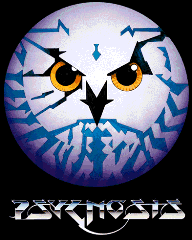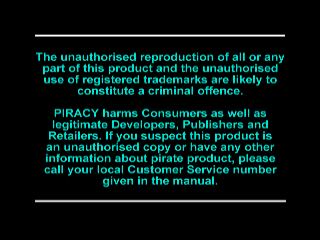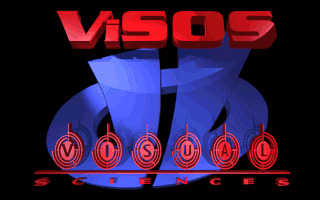Lemmings Paintball
| Lemmings Paintball |
|---|
|
Developer: Visual Sciences
|
Lemmings Paintball is a Cannon Fodder-esque game combining Lemmings, paintball, and capture-the-flag.
| To do: There may be some unused level objects. |
Contents
Debug Window
Contrary to its name, running the game with the /nodebug switch causes a debug console to appear. The window is periodically updated with information about the current game state, along with the values of several additional debug parameters which can be passed to the game on the command line. The supported parameters are:
- /paranoid, /showunloading, /showloading, /gc:NUMBER - Unused.
- /nosmallmemory - Supposed to do something, but unusable?
- /memorysize:NUMBER - Supposed to set the memory size (to number × 512kb), but it's hardcoded to 0x300000.
- /surfaces:NUMBER - Supposed to set the number of surfaces (whatever they are), but it's hardcoded to 80.
- /debugfile - Supposed to write debug output to debug.out, but crashes the game after a bit.
- /nowait - Quits the game immediately (instead of keeping the log window around) if something goes wrong. No effect without /nodebug?
- /wing, /cds, /gdk, /full - Related to graphics rendering?
Some other debug-related parameters are not explicitly mentioned by the debug console:
- /snddebug, /statdebug, /memdebug - These possibly cause more detailed debug information to appear under certain circumstances. Not tested.
- /testalllevels - Quickly cycle through every level in the game. Probably used to make sure that the game's resource files existed and could be read correctly.
- /? and ? - Do nothing. Launching the game with either of these parameters causes it to immediately exit.
Level Editor
During development, the game contained a built-in level editor. All of the editor's dialog boxes are still present, but the EXE only contains code to display one dialog: the About box. It seems that prior to release, the developers decided to simply render the level editor unusable rather than removing it completely.
There are two command line parameters related to the level editor:
- /edit@FILENAME - Open a level file with the editor.
- /play@FILENAME - Play a level file.
Normally, these parameters cannot be used to load the game's built-in levels, as they are all contained within the resource file PBAIMOG.VSR. These levels must be extracted before they can be loaded from the command line. This command-line tool can be used to take apart this resource file and access the levels contained within (as well as every single game resource that isn't an AVI or MIDI file).
Note: On startup, the game allocates a hardcoded amount of memory which is too small for the level editor to run. Attempting to start the editor causes the game to crash due to lack of memory. This can be fixed by opening LEMBALL.EXE with a hex editor and changing the value at 0x5586 from 30 to 60, which doubles the amount of memory available to the game.
Once a level file has been loaded, starting a single player game will take you that level. However, since most of the level editor's functionality has been disabled, there is not much difference between "edit mode" and "play mode": the former simply has a zoomed-out view allowing you to see more of the level at once, but is otherwise the same as regular gameplay.
If you enter an invalid filename for either /play@ or /edit@, the game displays a snarky error message that was probably not intended for public consumption:
Unused Editor Dialogs
As mentioned previously, all of the editor windows are still present within the EXE despite no longer being accessible.
Debug Password
In addition to the game's regular level passwords, there is a single hardcoded password which renders the normal ones obsolete. Entering 9913454278 at the password prompt unlocks all levels. If the debug console is enabled, the phrase "Oh, oh, someones cheating !!!" is also printed.
Self-Test
These two strings appear at various points in LEMBALL.EXE, and are used to test the integrity of the game's files. Changing either of the strings causes an assertion failure to occur.
John Ketley is a Weatherman, and so is Michael Fish Master v1.3
The former string appears more than once, and is a reference to a 1988 novelty pop song about British meteorologist John Kettley.
Unused Help File
There are two help files that come with the game: LEMBALL.HLP and LEMMIN~1.HLP. The latter is the game's actual help file, while the former file contains only this string:
Please edit me Mr. Help File author.
Unused About Dialog
A placeholder "About" dialog box is present alongside the other unused level editor dialogs.
Unused Graphics
The file PBAIMOG.VSR also contains several graphics which mostly seem to relate to the (apparently unreleased) PlayStation version of the game. The graphics are all stored as raw 8-bit bitmaps.
Opening Screens
- Image: \NEWFRONT\BITMAPS\HIRES\PsyggyScreen
- Palette: \PALETTES\PsyggyPalette
- Image: \NEWFRONT\BITMAPS\HIRES\VisualSciencesScreen
- Palette: \PALETTES\VisualSciencesPalette
- Image: \NEWFRONT\BITMAPS\HIRES\PiracyScreen
- Palette: \PALETTES\PiracyPalette
PS1 Controller
- Image: \NEWFRONT\BITMAPS\HIRES\PSX_PAD
- Palette: \PALETTES\TITLEPALETTE
VisOS Logo
The logo of the VisOS development system used by Visual Sciences. It may not have been intended to be seen by the player.
- Image: \registration\VISOS_LOGO
- Palette: \registration\VISOS_PALETTE
The Lemmings series
| |
|---|---|
| Amiga | Lemmings (Prototype) • Lemmings 2: The Tribes (Demo) |
| DOS | Lemmings • Oh No! More Lemmings • Lemmings 2: The Tribes (Demo) • 3D Lemmings |
| Acorn Archimedes | Lemmings |
| Mac OS Classic | Lemmings |
| SNES | Lemmings • Lemmings 2: The Tribes |
| Arcade | Lemmings |
| Amiga CD32, CDTV | Lemmings |
| Game Gear, Sega Master System | Lemmings • Lemmings 2: The Tribes |
| Genesis | Lemmings • Lemmings 2: The Tribes |
| NES | Lemmings |
| Game Boy (Color) | Lemmings (Prototype) • Lemmings 2: The Tribes • Lemmings & Oh No! More Lemmings (Localization Prototype) |
| 3DO | Lemmings |
| Windows | Lemmings • Lemmings Paintball • Lemmings Revolution |
| PlayStation | 3D Lemmings (Prototypes) • The Adventures of Lomax |
| Sega Saturn | 3D Lemmings |
| PlayStation Vita | Lemmings Touch |
- Pages missing developer references
- Games developed by Visual Sciences
- Pages missing publisher references
- Games published by Psygnosis
- Windows games
- Pages missing date references
- Games released in 1996
- Games with hidden development-related text
- Games with unused graphics
- Games with unused text
- Games with debugging functions
- To do
- Lemmings series
Cleanup > Pages missing date references
Cleanup > Pages missing developer references
Cleanup > Pages missing publisher references
Cleanup > To do
Games > Games by content > Games with debugging functions
Games > Games by content > Games with hidden development-related text
Games > Games by content > Games with unused graphics
Games > Games by content > Games with unused text
Games > Games by developer > Games developed by Visual Sciences
Games > Games by platform > Windows games
Games > Games by publisher > Games published by Sony > Games published by Sony Interactive Entertainment > Games published by Sony Computer Entertainment > Games published by SCEE > Games published by Psygnosis
Games > Games by release date > Games released in 1996
Games > Games by series > Lemmings series


















